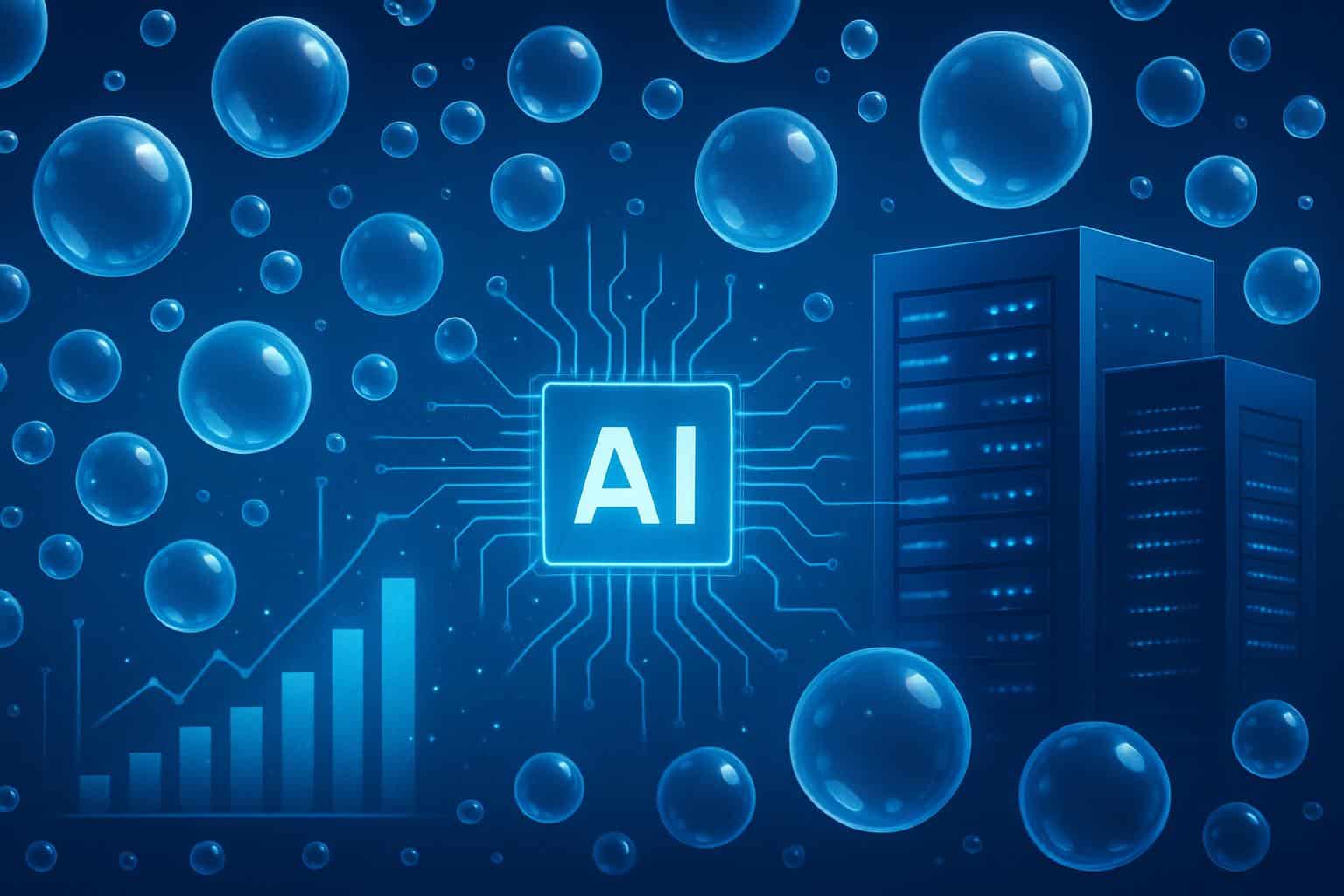Sam Altman is not going to pretend that the artificial intelligence boom is neat and clean. He says parts of the market are bubbly, acknowledges overinvestment in some areas and asserts that the industry’s fundamental underpinning is solid. His case is simple: in big technology waves, speculation and corrections are par for the course, but they exist alongside durable value creation based on real demand for compute, useful products and improving economics.
And that view arrives at a time of record spending in chipmaking, data centers and model development, and from an ever-increasing chorus of skeptics demanding to know where the financial payback is.

Altman’s answer is that the signal is basically getting drowned out by noise; adoption and monetization are already apparent, even if the payoffs come unevenly.
Why the AI bubble talk misses the mark on real progress
Tech history is a loop of investment cycles where exuberance and utility intersect. The commercial internet’s late-1990s bubble ended in pain, but its excesses financed the fiber and software that drove the following two decades of growth. Altman puts today’s AI in that sequence: there will be adjustments, but the underlying shift is real and compounding.
There are two forces that make this cycle different from pure speculation. First, the unit economics of AI are looking up as models become more efficient and inference costs decrease on newer hardware. Second, usage is already large-scale. Chat-based helpers, code copilots and AI content tools go from pilot projects to day-to-day work in enterprises and consumer apps, establishing the kind of recurring revenue streams that are rare this soon in a platform shift.
AI’s compute hunger and how companies are monetizing it
The most tangible sign is the ravenous market for compute. Frontier labs and hyperscalers are locking up multi-year access to GPUs and power, with chipmakers like Nvidia and AMD leading the buildout. These purchase agreements are not vanity plays; they support product roadmaps and SLAs across assistants, search and multimodal generation.
Altman’s claim is that every little GPU can go to work. Paid subscriptions, API usage and enterprise contracts monetize compute to revenue, and high capacity utilization helps us justify growing our footprint. The logic is clear in the product pipeline: more capable models make possible more valuable tasks, from tricky customer support to creative tools. Even OpenAI’s video model teaser, Sora, demonstrated that jumps in capability immediately equal compute demand — which means monetizable services.
Industry data supports the magnitude of this buildout. It tracks multi-billion-dollar private investment in generative AI for the Stanford AI Index since its breakout year and forecasts double-digit growth in spending on AI software over several years with Gartner. Infrastructure spending is big, but it’s not disconnected from how people are actually using money.

Why AI return on investment needs time to manifest
Critics cite surveys that most businesses haven’t realized any meaningful AI gains yet. That’s true — and expected. MIT’s Erik Brynjolfsson refers to this as the productivity J-curve: organizations need to invest in complementary assets (process redesign, data quality, training, governance) before productivity gains hit the P&L. Initial AI deployments frequently yield narrow productivity wins; broader revenue impacts are realized when workflows are re-architected for the new capability.
Meanwhile, the macro case is strong. McKinsey calculates that generative AI could add anywhere from $2.6 trillion to $4.4 trillion in annual value across industries, especially in customer operations, software engineering and marketing. Those numbers aren’t guarantees, but they help explain why capital is still flowing as CFOs fine-tune their ROI math.
Evidence of real adoption across enterprise and consumer
Get beyond the point-scoring, the demagoguing and you will find there are quantifiable patterns that lead to success. Coders working with AI helpers complete their tasks faster and are more satisfied, in controlled studies that Microsoft and GitHub have published. Contact centers are deploying AI copilots that summarize calls and even draft responses, shaving minutes from interactions and boosting customer satisfaction scores. News organizations are using multimodal models to create copy, images and video variants for A/B testing at a fraction of the former cost.
Importantly, these are not one-off studies. Enterprises are embedding access to AI into per-seat licenses, gating heavyweight capabilities behind paid tiers and purchasing assured throughput. It’s that repeatability that explains why Mr. Altman is sanguine: usage plus pricing power can finance the next model and infrastructure upgrades.
The risks facing AI are real, but they are not existential
None of that portends a smooth ride. Power and data center limitations, supply-chain bottlenecks getting advanced chip technology from Asia to Europe and the U.S., regulatory considerations and concerns about safety and intellectual property all pose execution risk. A pullback in funding for startups or a reset of model hype could also deflate valuations.
But Altman’s major point is that a correction is going to reprice assets, not eliminate progress. The useful-AI demand curve is steep, and the ecosystem — from chipmakers to cloud systems to anyone who sells into enterprises desperate for some of that “machine learning” stuff — has incentives aligned around efficiency and reliability. In effect, the froth constitutes a surface phenomenon; beneath it, there is still buildup.
The takeaway for leaders is decidedly pragmatic: Treat AI like a capability, not a press release. Invest where compute can be linked to clear workflows, measure results beyond headcount savings and redesign processes to unlock the J-curve. If Altman is correct, the winners will be those who keep their balance while everyone else debates bubbles.

